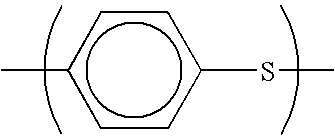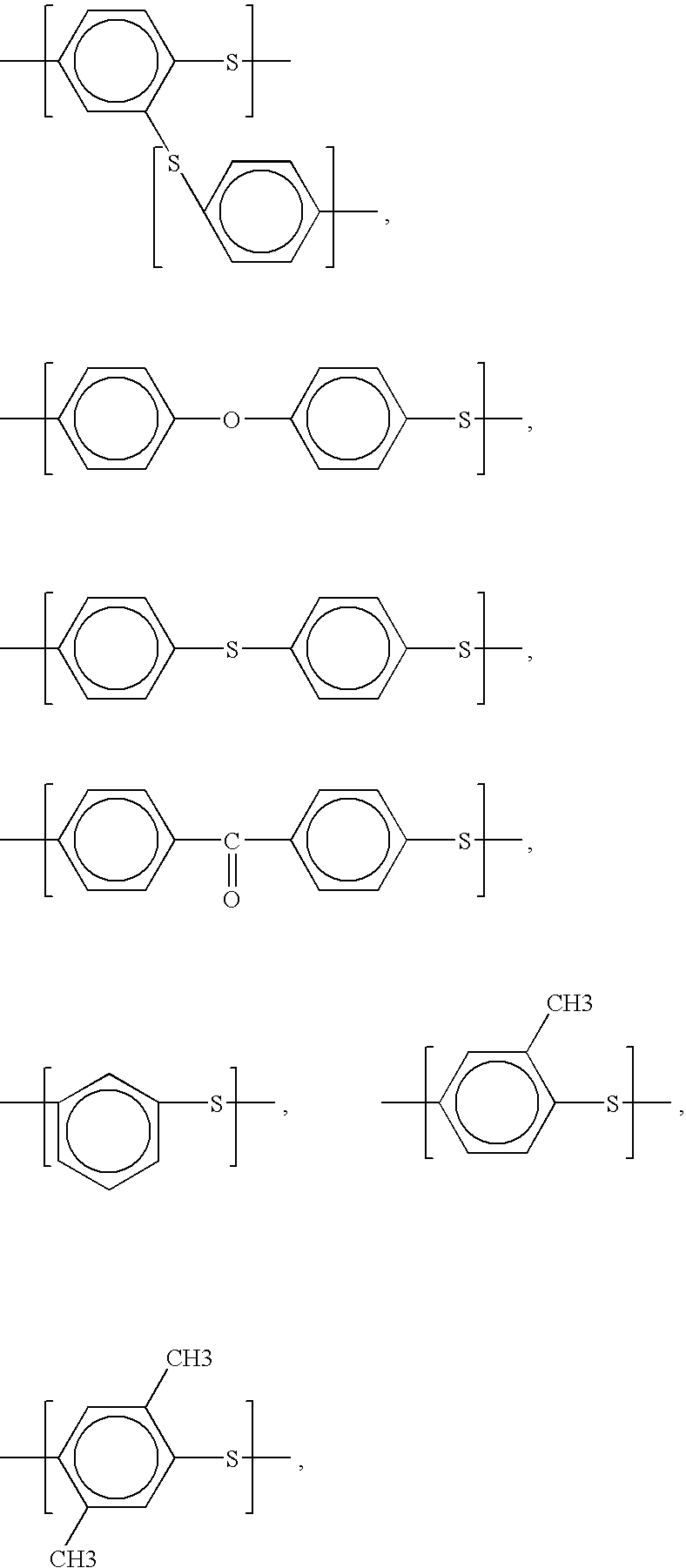Polymer alloy and method for manufacturing polymer alloy
a polymer alloy and polymer alloy technology, applied in the field of polymer alloy manufacturing methods, can solve the problems of poor spinning stability during spinning, difficult control of dispersion size for making it small, and inability to achieve satisfactory effects in improving strength, toughness and heat resistance of molded objects
- Summary
- Abstract
- Description
- Claims
- Application Information
AI Technical Summary
Benefits of technology
Problems solved by technology
Method used
Image
Examples
working examples 1 to 5
[0170] Raw materials with a composition ratio shown in Table 1 were fed into a parallel plates type shear flow-applying device (CSS-430 produced by Linekam), and molten at a kneading temperature of 250.degree. C. Then, a shear field was applied at the shear rate shown in Table 1. Every sample was observed in the portion subjected to the shear field at the shear rate shown in Table 1, and it was confirmed that none of the samples had any structure. Each of the samples was immediately quickly cooled in icy water to fix its structure, and the phase structure of the obtained sample was observed with a transmission electron microscope. It was confirmed that none of the samples had structure of 0.001 .mu.m or more, and that they were made miscible. So, it was found that this series was made miscible at 250.degree. C. under the shearing condition shown in Table 1.
[0171] Next, raw materials with a composition ratio shown in Table 1. were fed into a twin-screw extruder (PCM-30 produced by Ik...
working examples 6 and 7
[0185] Raw materials with a composition ratio shown in Table 2 were fed into a parallel plates type shear flow-applying device (CSS-430 produced by Linekam), and molten at a kneading temperature of 240.degree. C. Then, a shear field was applied at the shear rate shown in Table 2. Every sample was observed in the portion subjected to the shear field at the shear rate shown in Table 2, and it was confirmed that none of the samples had any structure. Each sample was immediately quickly cooled in icy water, to obtain a sample with its structure fixed. The phase structure of the obtained sample was observed with a transmission electron microscope. It was confirmed that none of the samples had structure of 0.001 .mu.m or more, and that they were made miscible. So, it was found that this series was of a system that could be made miscible at 240.degree. C. under the shearing condition shown in Table 2.
[0186] Raw materials with a composition ratio shown in Table 2 were fed into a twin-screw ...
working examples 13 to 15
[0204] Melt blending was carried out to obtain pellets as described for Working Examples 8 to 10, except that a die with a large inner volume was used. The retention time in the die was 20 seconds. In the observation made using a transmission electron microscope as described for Working Examples 8 to 10, fine co-continuous structures were observed. The wavelengths of concentration fluctuation obtained using small-angle X-ray scattering are shown in Table 3. The molded articles were evaluated as described for Working Examples 8 to 10, and the results are shown in Table 3.
3TABLE 3 Working Working Working Working Example 8 Example 9 Example 10 Example 11 Composition PBT-2 parts by 75 55 25 55 weight PC-2 parts by 25 45 75 45 weight Releasing agent parts by -- -- -- 0.2 (internally added) weight Releasing agent parts by -- -- -- -- (externally added) weight Kneading Temperature .degree. C. 260 260 260 260 conditions Screw speed rpm 300 300 300 300 Dwell time in die sec 5 5 5 5 Cooling b...
PUM
 Login to View More
Login to View More Abstract
Description
Claims
Application Information
 Login to View More
Login to View More - R&D
- Intellectual Property
- Life Sciences
- Materials
- Tech Scout
- Unparalleled Data Quality
- Higher Quality Content
- 60% Fewer Hallucinations
Browse by: Latest US Patents, China's latest patents, Technical Efficacy Thesaurus, Application Domain, Technology Topic, Popular Technical Reports.
© 2025 PatSnap. All rights reserved.Legal|Privacy policy|Modern Slavery Act Transparency Statement|Sitemap|About US| Contact US: help@patsnap.com



